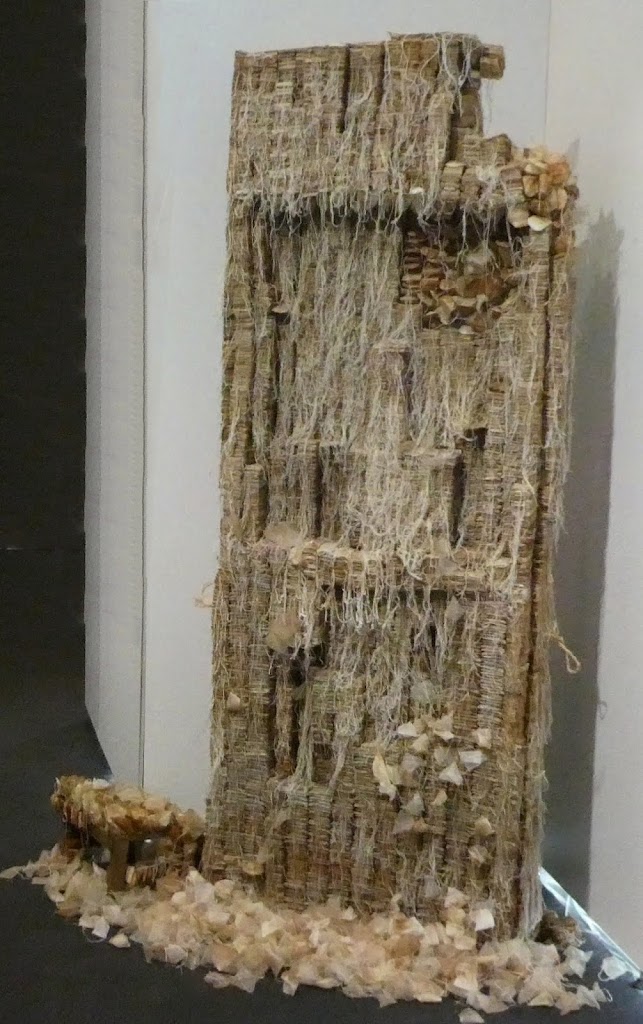Ar(tea)fact – as long as it needs to...

One day, there appeared the first teabag. Instead of throwing it away, he contemplated it. The next day, he held onto it. After that, he dried it and cured it like one would heal somebody.
Step by step they patiently tamed each other, so that when the teabags became numerous, he started to stick them first onto a small canvas. They were not simple garbage anymore, but presences (or absences), pieces of breath that naturally imposed themselves onto our lives. Naturally… Because tea is natural, even if the teabag is not. A teabag is daily, teabag is common, but it is not natural. It is an art(tea)fact, indeed – an insignificant hybrid belonging to the industrialised natural. It is a rather typical part of life for a lambda consumer in a hurry, light years away from the mystic Extreme East tea ceremony according to the Western imagination.
He kept his teabags, and we all ended up keeping ours for him. The more time passed, the more watching him processing them into something almost alive would not turn the spent teabag into something else anymore, but would indeed change us ourselves and our way of perceiving it. The shape, the color, the perfume of tea revealed itself to us. A teabag is very precise.

It has a certain shape, neither too tall, nor too small. It is not flexible, it imposes its rythm because of its size, always almost the same, yet never exactly.
The teabag was still there, but it has ended up imposing itself, teaching us not to look at it, but through it. It was no longer garbage, but a key which would open the door to other hitherto unsuspected desires just like the book, » The book of Tea » by Akakura Kakuzo, that I found by chance close to a garbage can, as if it was a sign of destiny. Would I have noticed it if there were no teabags ? All around us, friends and neighbors started to adhere to our « tea-ophilia » and also offered us their teabags.
On the day I asked through social media if tea drinkers would like to send us their used bags, I never expected that we would receive so many teabags for months from people all around the world! The hardest part was asking them to stop. People couldn’t throw anymore. Some kept them for compost, but now everyone had trouble throwing them away. Before that, we used to drink tea without really thinking about it just for its taste, or by habit. We never wondered how it came here, why his grandmother drank hers it in a mug and mine in a glass.
We also never contemplated the fact that the earth is divided between tea drinkers and coffee drinkers, perhaps on account of the influence of one or another colonial empire. We never thought there was the tea revolt and alas the tea party. One would collect useless teabags to transform them and would finally be transformed by them. Just as we recycled teabags, we would recycle one’s ideas paying attention to the few, to the almost invisible that seems insignificant.
We would do what we had to do by asking questions and by answering them too. Together with Armén, we create ephemeral worlds by in situ installations to show that beauty could save the world if there are people there to see it. People often ask such questions as, « How long did it take to create an artwork ? » and we answer, « It takes an entire life ». People also ask us « How long will last your artwork ? » and we answer « It depends on the attention there is for it, if you care it will last as long as it needs to… ». But the most important thing for us is to change your outlook.